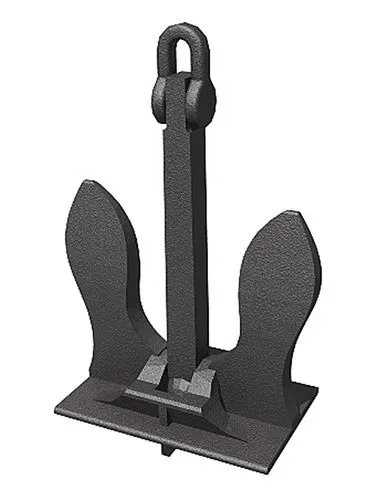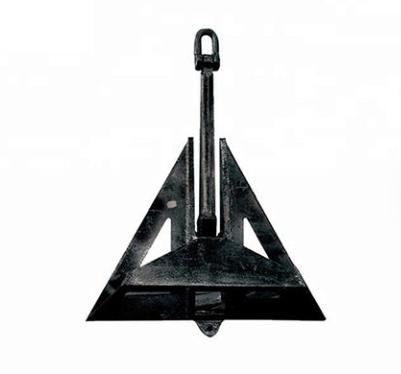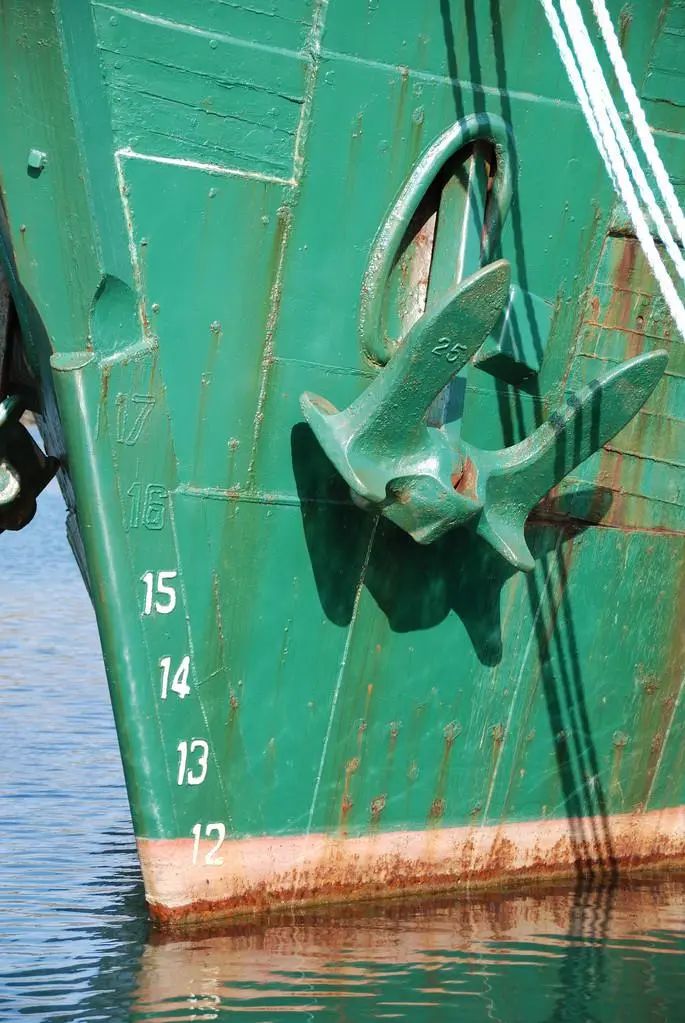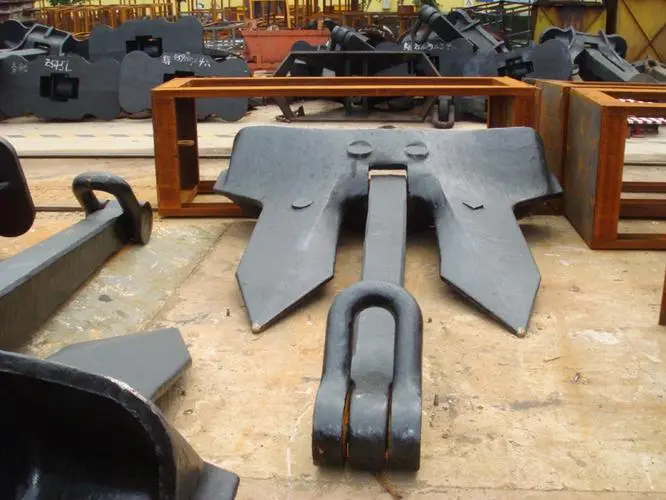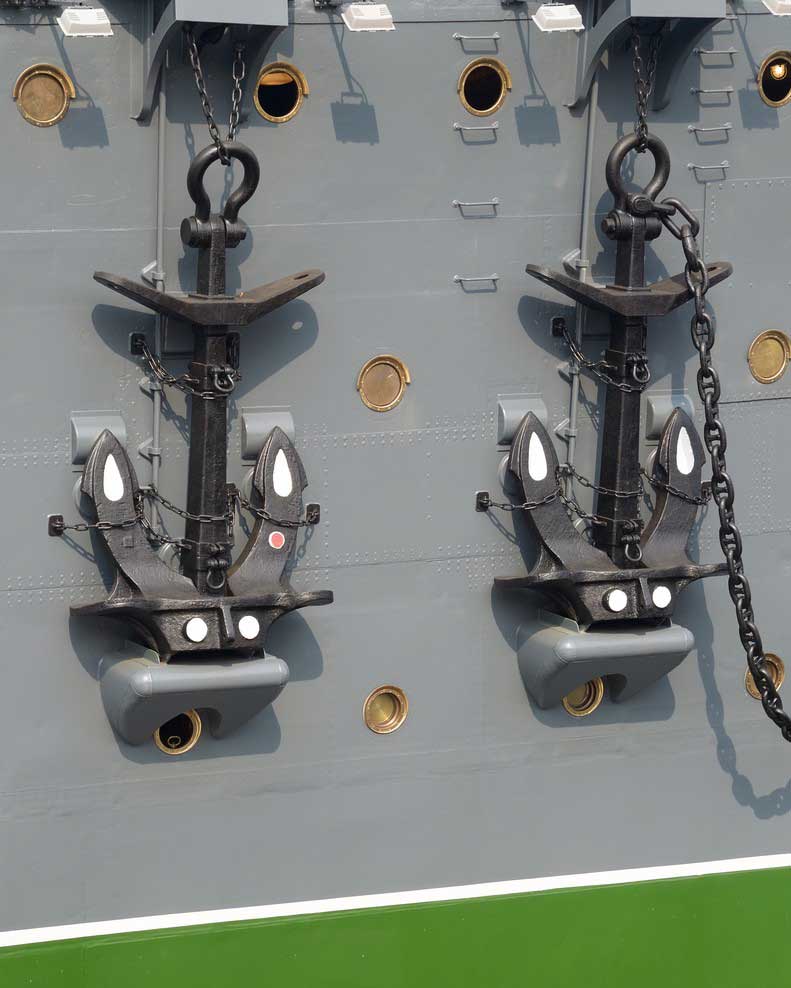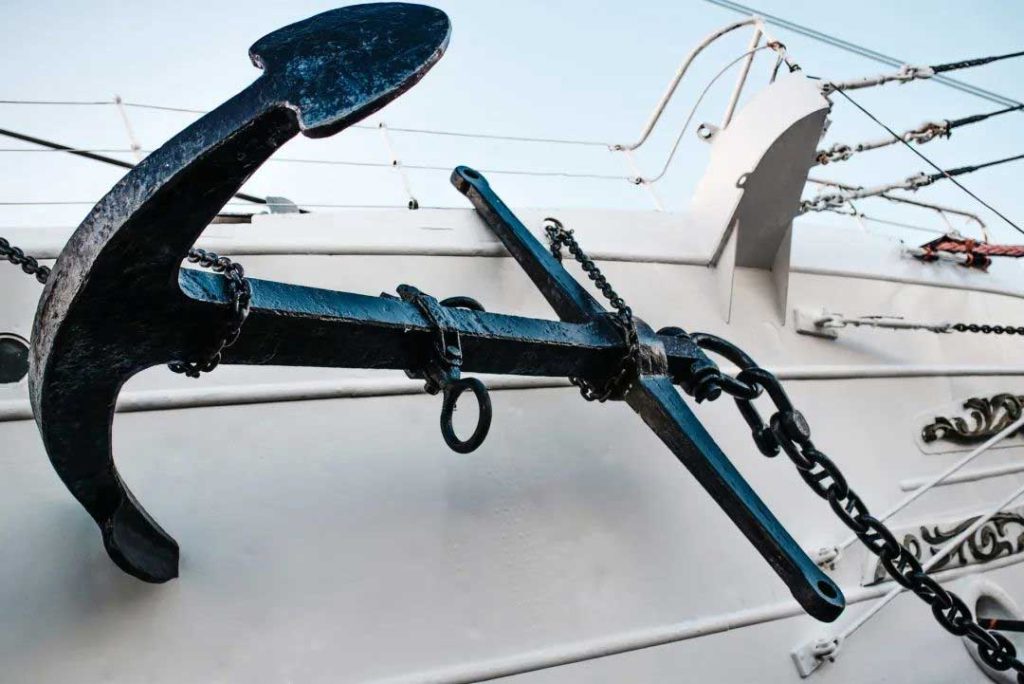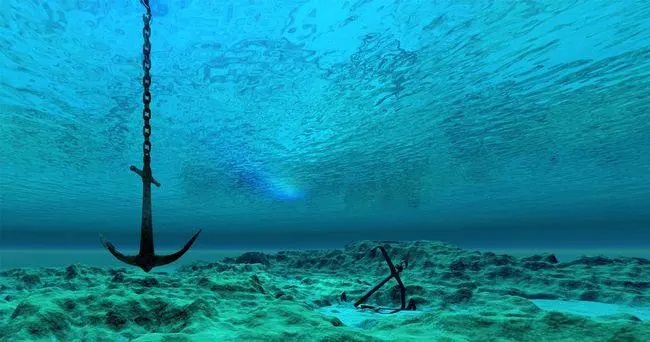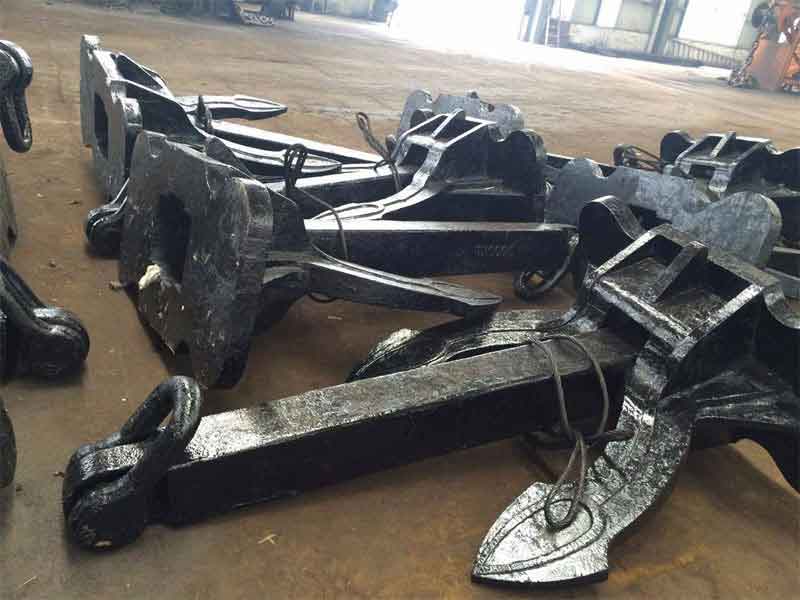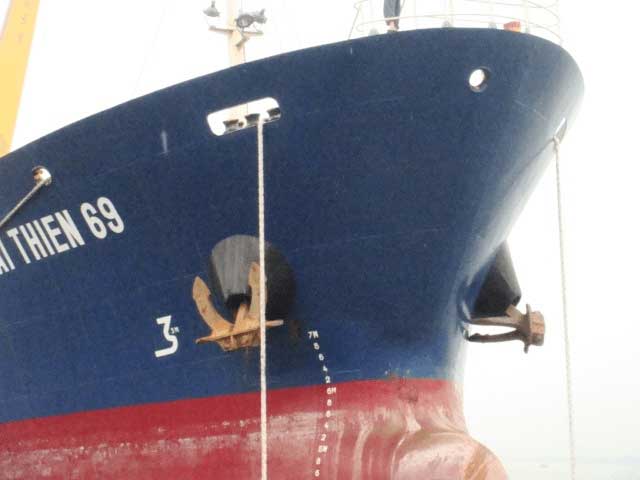Table of Contents
An anchor is a device, normally made of metal, used to secure a vessel to the bed of a body of water to prevent the craft from drifting due to wind or current. Anchors play a crucial role in maritime operations and are integral to the safety, stability, and functionality of vessels at sea. Their importance is multifaceted and extends to various aspects of maritime activities:

- Safety and Stability: Anchors provide stability to vessels by preventing them from drifting or being pushed off course by currents, winds, or tides. This stability is vital to ensure the safety of crew members and the cargo being transported.
- Mooring and Position Control: Anchors are used to secure vessels in a specific location or position, such as when they need to anchor in a harbor, near offshore structures, or during emergencies. This mooring capability helps vessels avoid collisions, groundings, or drifting into restricted areas.
- Emergency Situations: Anchors are essential for emergency situations, such as engine failures, storms, or navigation equipment malfunctions. They allow vessels to maintain a stable position or ride out adverse conditions until assistance arrives.
- Navigation and Manoeuvrability: Anchors can be used strategically in navigation. For instance, vessels can anchor temporarily to slow down, wait for favorable conditions, or plan their entry into congested ports or narrow channels.
- Efficiency in Operations: Anchors enable vessels to maintain station while conducting various operations, such as loading and unloading cargo, offshore drilling, fishing, or research activities. This helps ensure efficiency and safety during these tasks.
In summary, anchors are indispensable tools in maritime operations, providing stability, safety, and control over vessels in various situations. Their proper use and maintenance are critical to ensuring the efficiency and safety of maritime activities while also minimizing environmental impacts. Anchors are divided into various types, among which stockless anchors and stock anchors are the most important types of anchors. For an introduction to other types of marine anchors, please refer to this article “3 Facts Help You To Know About Marine Anchor”. This article will focus on the difference between stockless anchors and stock anchors.
Stock Anchors
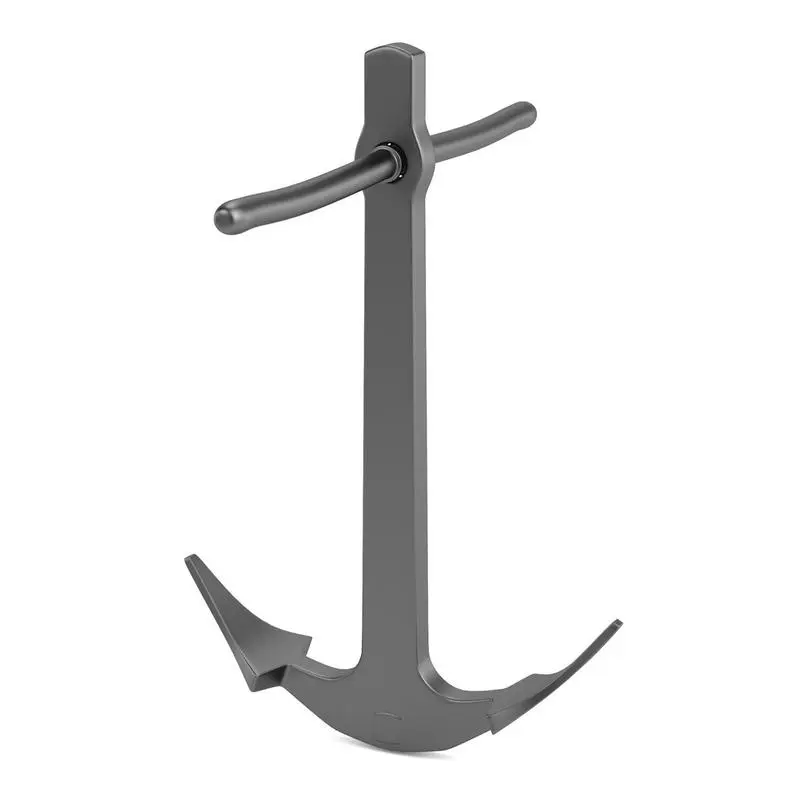
1. Definition and Characteristics
- Presence of a Stock (Crossbar): Stock anchors are characterized by the presence of a stock, which is a crossbar or beam that extends horizontally from the shank of the anchor. This stock provides stability and helps the anchor to orient itself properly on the seabed.
- Traditional Design and Historical Significance: Stock anchors have a traditional design that dates back centuries and were widely used in the early days of maritime exploration. The presence of the stock allows the anchor to pivot and align itself with the force of the current, wind, or tide, ensuring it digs into the seabed effectively. This design has historical significance as it was a fundamental tool in the maritime industry’s development.
2. Types of Stock Anchors
Admiralty Anchor: The Admiralty anchor is one of the most well-known types of stock anchors. It features a hinged stock, a shank with pointed arms, and a pair of flukes (the flat, pointed ends that dig into the seabed). Admiralty anchors were widely used in naval vessels and large sailing ships due to their holding power and stability.
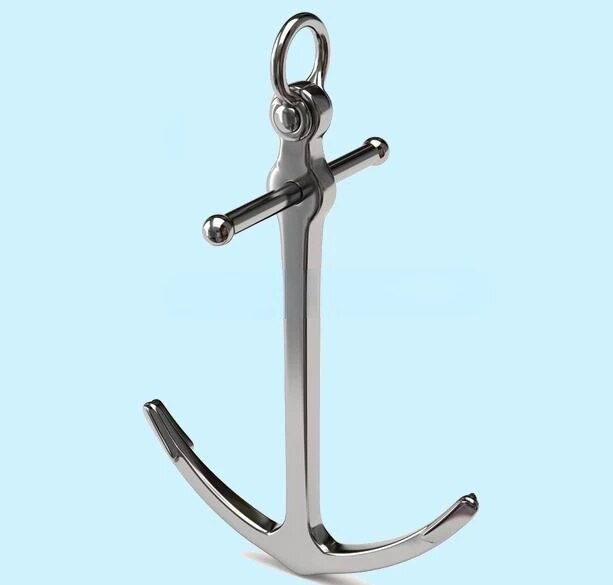
Stockless Anchors with Removable Stocks: Some stockless anchors are designed with removable stocks. These stocks can be detached when not needed, allowing the anchor to function as a stockless anchor. When the stock is attached, it provides the anchor with the benefits of both stockless and stock anchors, making it versatile and suitable for various maritime applications.
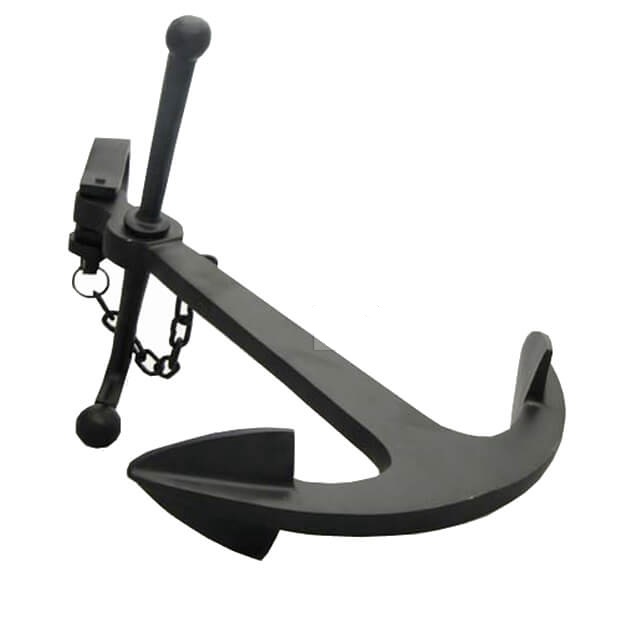
Stockless Anchors
1. Definition and Characteristics
- Absence of a Stock (Crossbar): Stockless anchors are characterized by the absence of a stock, which is the crossbar or beam typically found in stock anchors. Instead, stockless anchors have a single shank with flukes attached directly to it.
- Modern Design and Technological Advancements: Stockless anchors have a more modern design compared to traditional stock anchors. They have benefited from technological advancements in materials and manufacturing processes, resulting in improved performance and durability.
2. Types of Stockless Anchors
Danforth Anchor: The Danforth anchor, also known as the fluke anchor, is a popular type of stockless anchor. It features two flat, triangular flukes attached to a single shank. This design allows for easy stowage and rapid deployment. Danforth anchors are known for their efficiency in sandy or muddy seabeds.
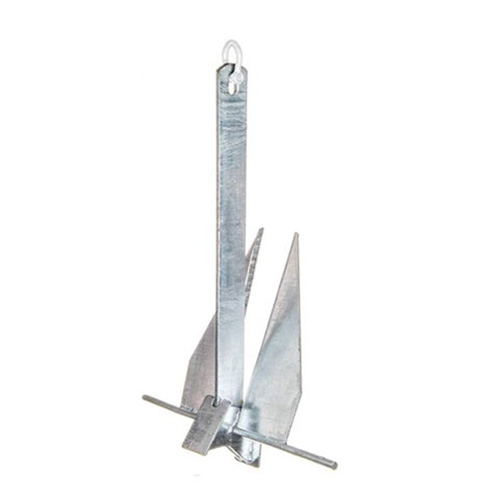
Plow Anchor (CQR): The Plow anchor, often referred to as the CQR (Coastal Quick Release) anchor, is another type of stockless anchor. It has a plough-like shape with a single shank and a hinged, concave fluke. Plough anchors are versatile and can perform well in a variety of seabeds, including sand, mud, and gravel.
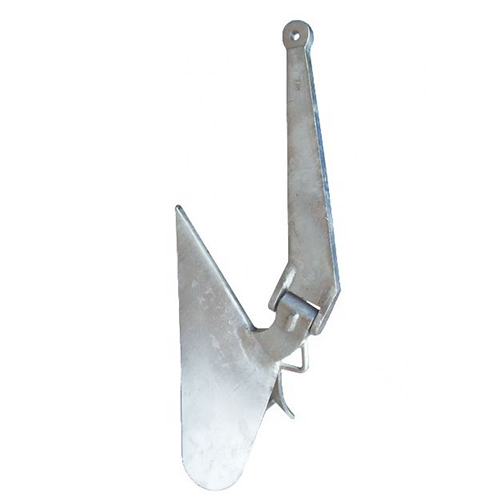
Key Differences Between Stock Anchors and Stockless Anchors
1. Design and Structure
Presence vs. Absence of a Stock:
- Stock Anchors: Stock anchors are characterized by the presence of a stock, a horizontal crossbar or beam extending from the shank. The stock allows the anchor to pivot and align itself with the force of currents and tides, aiding in effective embedding into the seabed.
- Stockless Anchors: Stockless anchors, as the name suggests, lack a stock. They have a single shank to which the flukes are directly attached. The absence of a stock simplifies the design but also affects the anchor’s behavior in the water.
Shape and Configuration Variations:
- Stock Anchors: Stock anchors often have a more traditional design, with pointed arms (flukes) and a prominent stock. They may come in various shapes, such as Admiralty anchors with hinged stocks or stockless anchors with removable stocks.
- Stockless Anchors: Stockless anchors come in various designs, such as the Danforth anchor with flat, triangular flukes or the Plough anchor (CQR) with a plow-like shape. These designs are more streamlined and compact compared to stock anchors.
2. Application and Suitability
Specific Use Cases for Each Type of Anchor:
- Stock Anchors: Stock anchors are often preferred in situations where maximum holding power and stability are crucial, such as on larger vessels, offshore platforms, or in adverse weather conditions. They excel in challenging seabeds like rocky or weedy bottoms.
- Stockless Anchors: Stockless anchors are versatile and find use in a wide range of maritime applications. They are suitable for smaller vessels, recreational boating, and situations where ease of handling and compact stowage are important. They perform well in sandy, muddy, and gravelly seabeds.
Factors Affecting the Choice of Anchor Type:
- Vessel Size and Type: The size and type of the vessel play a significant role in anchor selection. Larger vessels may prefer stock anchors for their superior holding power, while smaller vessels may opt for stockless anchors for their ease of handling.
- Seabed Conditions: The nature of the seabed in the intended anchoring location is a crucial factor. Stock anchors are better suited to challenging seabeds, while stockless anchors perform well in softer or mixed-bottom conditions.
- Handling and Storage Constraints: Considerations regarding deck space, manpower, and equipment for anchor handling and stowage influence the choice. Stockless anchors are more convenient in this regard.
- Specific Operational Requirements: The specific tasks or operations the vessel will undertake, such as fishing, research, or cargo loading, can determine the choice of anchor type.
- Environmental Regulations: Compliance with environmental regulations and protection of sensitive seabed ecosystems may also impact anchor choice.
3. Advantages and Disadvantages
Advantages of Stock Anchors:
- Holding Power: Stock anchors are known for their excellent holding power, especially in challenging seabeds, such as rocky or weedy bottoms. The stock helps the anchor to maintain its position even in strong currents or winds.
- Alignment and Settling: The presence of the stock allows the anchor to align itself with the force of the tide or wind, facilitating a swift and secure set (embedding) in the seabed.
- Historical Significance: Stock anchors hold historical value and are often seen as iconic symbols in maritime culture and history.
Advantages of Stockless Anchors:
- Ease of Handling and Storage: Stockless anchors are generally more compact and easier to handle and stow compared to stock anchors. Their design lends itself to efficient deployment and retrieval, making them suitable for smaller vessels.
- Holding Power and Performance in Different Seabeds: While stockless anchors may have slightly less holding power than some stock anchors, they perform well in a range of seabeds, including sandy, muddy, and rocky bottoms. Their versatility makes them a practical choice for many maritime applications.
Disadvantages of Stock Anchors:
- Handling and Storage Challenges: Stock anchors are bulkier and more challenging to handle and stow compared to stockless anchors. Their stocks can be cumbersome, requiring more deck space and manpower for deployment and retrieval.
- Weight: Stock anchors tend to be heavier than some modern stockless anchor designs, making them less practical for smaller vessels or situations where weight is a critical factor.
- Limited Versatility: Stock anchors may not be as versatile as stockless anchors in certain situations, particularly in shallow waters or areas where precise positioning is required.
Disadvantages of Stockless Anchors:
- Holding Power in Challenging Conditions: Stockless anchors may not provide the same level of holding power as some stock anchors, especially in challenging conditions like strong currents or heavy winds.
- Limited Historical Significance: Stockless anchors lack the historical significance and cultural symbolism associated with traditional stock anchors, which are often seen as iconic maritime symbols.
- Anchor Resetting: In shifting seabed conditions or changing tidal flows, stockless anchors may require more frequent resetting to ensure they maintain their hold.
In summary, the key differences between stock anchors and stockless anchors lie in their design, features, application, and suitability for various maritime situations. The choice of anchor type should be based on factors such as vessel type, seabed conditions, operational needs, and regulatory considerations.
Performance and Holding Power
1. Stock Anchor’s Performance in Different Conditions:
Stock anchors are renowned for their impressive holding power, especially in challenging maritime conditions. Their performance can vary depending on several factors:
- Seabed Conditions: Stock anchors excel in seabeds with challenging conditions like rocky or weedy bottoms, where their design allows them to dig in securely and resist dragging.
- Strong Currents and Winds: Stock anchors provide reliable holding power in areas with strong currents or heavy winds. The presence of the stock helps maintain the anchor’s orientation, ensuring it remains embedded.
- Stability: Stock anchors contribute to the overall stability of a vessel when anchored. They are less prone to shifting or tilting, which can be advantageous during adverse weather.
- Bottom Types: While stock anchors perform exceptionally well in challenging seabeds, their performance may be less efficient in soft, sandy, or muddy bottoms. In such cases, they might require more time to settle and embed securely.
2. Stockless Anchor’s Performance in Various Seabeds:
Stockless anchors are versatile and perform effectively in a variety of seabed conditions. Their performance characteristics include:
- Sandy Seabeds: Stockless anchors, such as the Danforth anchor, are well-suited for sandy bottoms due to their ability to set quickly and securely. Their flat, triangular flukes can grip the sand effectively.
- Muddy Seabeds: Stockless anchors can also perform well in muddy seabeds. Their design allows them to penetrate the mud and establish a reliable hold.
- Mixed or Gravelly Bottoms: Stockless anchors, including the Plough anchor (CQR), are adaptable to mixed or gravelly seabeds. Their versatile shape and design help them maintain holding power in such conditions.
- Ease of Setting: Stockless anchors are known for their ease of setting and retrieval. They are particularly advantageous in situations where quick anchoring is required.
3. Comparative Analysis of Holding Power:
Comparing the holding power of stock anchors and stockless anchors involves various factors, including:
- Seabed Type: The nature of the seabed greatly influences the holding power. Stock anchors tend to have an advantage in rocky or challenging bottoms, while stockless anchors are more versatile in softer seabeds.
- Anchor Size and Weight: The size and weight of the anchor play a significant role. Larger stock anchors generally offer more holding power than smaller stockless anchors.
- Currents and Wind: In conditions with strong currents or wind, both types of anchors can provide reliable holding power. However, stock anchors may have a slight edge in maintaining orientation.
- Depth of Embedment: The depth to which the anchor embeds itself in the seabed is critical for holding power. Stock anchors, with their design, can penetrate deeper in challenging conditions.
- Scope of Anchor Chain or Rode: The scope (ratio of anchor chain or rode length to water depth) affects holding power. Proper scope management is essential for both types of anchors.
In summary, the holding power of stock anchors and stockless anchors varies depending on seabed conditions, anchor size, and other environmental factors. Stock anchors excel in challenging conditions, while stockless anchors offer versatility in a range of seabeds. The choice between the two anchor types should be based on the specific maritime situation and requirements.
Conclusion
The choice between stock anchors and stockless anchors is not a matter of one being definitively better than the other; instead, it hinges on a careful assessment of the specific needs and circumstances at hand. Whether navigating through stormy seas, anchoring in shallow waters, or securing a vessel for recreational purposes, understanding these distinctions empowers mariners to make informed choices that enhance safety and operational efficiency.
As maritime technology continues to evolve, new anchor designs and materials may further shape the choices available to seafarers. However, the core principles of stability, holding power, and suitability for the task at hand will remain timeless considerations in the world of maritime anchoring.

